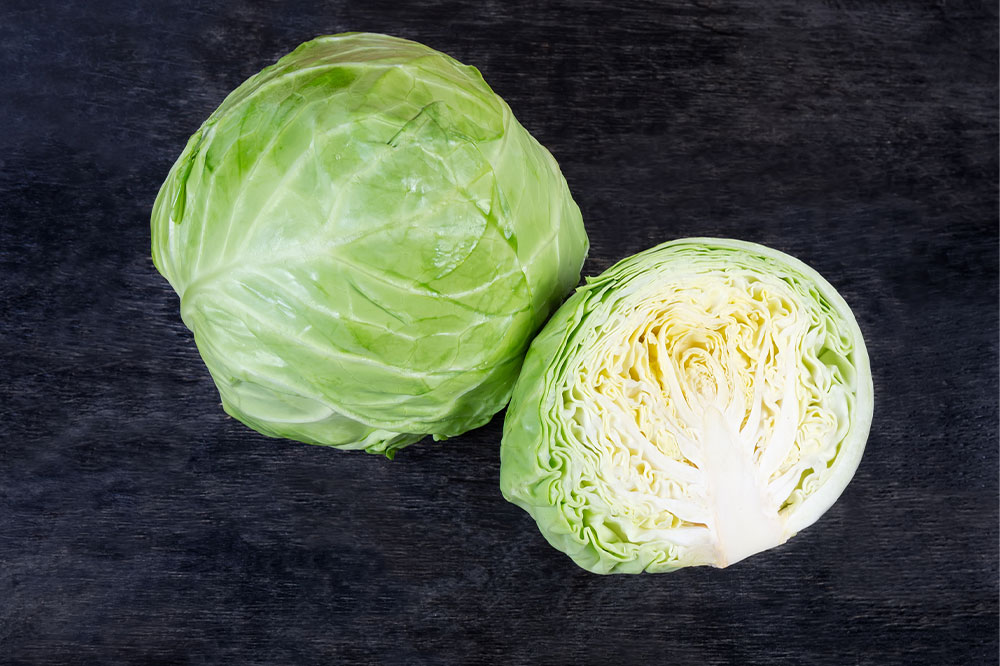8 foods that improve kidney and liver function

A healthy kidney and liver are essential to the functioning of other organs in the body, such as the heart, spine, and brain. Keeping this in mind, it is important to provide the body with the best nutritional care possible. There are certain foods that are recommended for improving the health and function of the kidney and liver. Read to know more about the foods that you can add to your regular meals.
Cabbage
Cabbages have high levels of vitamin B6 and folic acid content, which are known to protect the kidneys from infections and damage. Since cabbage is a cruciferous vegetable, they are known for the phytochemicals which help in breaking the free radicals that damage the body and are also known to cause cancer. They are also high in vitamins like K, C, and fiber.
Fatty fish
Omega 3 fatty acids are found in fatty fish like salmon, tuna, and other cold water fish like herring, mackerel, and sardines. These are all oily fish that are great sources of healthy fats that keep the body functioning well. According to several researchers and the National Kidney Foundation, the omega-3s found in fatty fish are responsible for keeping blood pressure in check by keeping the healthy fat in check. Since blood pressure creates complications for the kidneys, it is vital to include these foods in the meal routine.
Sweet potatoes
Packed with beta-carotene, fiber, vitamins A, C, B6, manganese, potassium, copper, niacin, and several other nutrients, sweet potatoes make for an incredible food source when it comes to keeping kidneys healthy. Eating food sources that are rich in potassium will help to balance out the sodium levels, which, if in excess, can put stress on the kidneys. You can easily incorporate sweet potatoes in the meal plans by switching from regular white potatoes in most recipes.
Cranberries
Cranberry juice is a great source for fighting off bacterial infections in the bladder. And why does that make it an excellent food for kidney health? These bacteria could easily affect the kidney by traveling through the bladder, but the compounds in cranberries prevent them from sticking to the wall.
Grapes
These are rich in fiber and antioxidants, making them a great food source for liver and kidney health. The antioxidant called resveratrol is an excellent compound that helps prevent the body from experiencing liver damage. There is research to suggest that those who take resveratrol supplements that are extracted from the grapes on a regular basis are more likely to experience less inflammation as compared to those who don’t take this antioxidant. Since these fruits can help reduce the oxidative stress caused in the body, it is recommended as a healthy source of food for liver and kidney health.
Nuts
Nuts, which are known for their unsaturated fat content, are an excellent addition to a meal. Studies suggest that including 28 grams of walnuts in your daily meals/snacks can help reduce liver diseases. Another study, specific to men’s health, suggests that an increased nuts intake decreases the risk of fatty liver diseases. They are also loaded with antioxidants, and lower cholesterol and triglycerides. They are also beneficial for type 2 diabetes and metabolic syndrome and reduce heart disease risk.
Beans
Foods like beans, lentils, and chickpeas contain deficient levels of saturated fats as compared to other food items like red meat. So the American Liver Foundation recommends finding the right substitutes in foods that have less saturated fats, like beans, for daily nutritional requirements. These grains are also rich in fiber that helps promote liver health, so adding some greens to the daily meal plans is highly recommended by professionals. They are also rich in iron, magnesium, potassium, phosphorus, folate, and calcium. They also make for a protein-heavy meal which makes one feel full.
Onions
They are known to be part of the Allium food family, and their pungent smell is very well known. This smell actually comes from the sulfur compounds present in the vegetable. They are rich in compounds like flavonoids, especially one called quercetin, which is known to reduce heart diseases and protect against some types of cancers. They are also great to add to recipes requiring less sodium but strong flavor, specifically a renal food plan focusing on kidney health. Sautéing this vegetable in some olive oil, along with garlic, can bring out a lot of flavor in a dish without adding too much salt.






